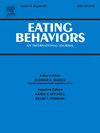美国一所私立大学医学生体重偏见内化、体重可控性信念和可能的饮食失调关联
IF 2.4
3区 医学
Q2 PSYCHIATRY
引用次数: 0
摘要
目的探讨医学生在承受医学院压力和准备成为未来的医疗保健医生时,体重偏差测量与可能的饮食失调筛查之间的关系。方法对378名医学生进行基于网络的体重偏见内化量表(修正体重偏见内化量表[WBIS-M])、体重可控性信念量表(肥胖者信念量表[BAOP])和可能的饮食失调症状量表(SCOFF问卷)调查。采用多变量logistic和线性模型检验体重偏倚测量与可能饮食失调筛查阳性(SCOFF≥2)之间的横断面相关性,并对性别认同进行调整。结果与男性(n = 135)相比,女性(n = 234)有更高的体重偏见内在化(平均WBIS-M: 3.13比2.81),并且更坚信体重在高体重者的控制范围内(平均BAOP: 25.76比27.21)。在调整性别认同后,较高的体重偏倚内化与可能的进食障碍筛查阳性相关(OR = 3.00, 95% CI: 2.29, 4.02, SCOFF为二元测量;β = 0.535, 95% CI: 0.44, 0.63 (SCOFF为连续测量)。仅在调整性别认同后,体重可控性信念与可能的饮食失调筛查之间存在显著关联(β = 0.019, 95% CI: 0.00, 0.04, SCOFF作为连续测量)。结论体重偏倚及其内化与医学生饮食失调有关。在医学教育中,针对体重偏见及其内化的有效干预是必要的。本文章由计算机程序翻译,如有差异,请以英文原文为准。
Weight bias internalization, weight controllability beliefs, and probable eating disorder associations among medical students at a private university in the US
Objective
To explore the association between weight bias measures and probable eating disorders screening among medical students, as they endure the stress of medical school as well as prepare to become future healthcare physicians.
Methods
Medical students (n = 378) completed a web-based survey assessing weight bias internalization (Modified Weight Bias Internalization Scale [WBIS-M]), beliefs about weight controllability (Beliefs About Obese Persons [BAOP]) scale, and probable eating disorder symptoms (SCOFF questionnaire). Multivariable logistic and linear models were used to examine the cross-sectional associations between weight bias measures and a positive probable eating disorder screening (SCOFF ≥ 2), adjusting for gender identity.
Results
Compared to men (n = 135), women (n = 234) had higher weight bias internalization (mean WBIS-M: 3.13 vs. 2.81) and stronger beliefs that weight is within the control of higher-weight people (mean BAOP: 25.76 vs. 27.21). Higher weight bias internalization was associated with positive probable eating disorder screening after adjusting for gender identity (OR = 3.00, 95 % CI: 2.29, 4.02 with SCOFF as a binary measure; β = 0.535, 95 % CI: 0.44, 0.63 with SCOFF as a continuous measure). A significant association was observed between beliefs about the controllability of weight and probable eating disorder screening, only after adjusting for gender identity (β = 0.019, 95 % CI: 0.00, 0.04 with SCOFF as a continuous measure).
Conclusions
Weight bias and its internalization is associated with probable eating disorders among medical students. Effective interventions targeting weight bias and its internalization during medical education are warranted.
求助全文
通过发布文献求助,成功后即可免费获取论文全文。
去求助
来源期刊

Eating behaviors
Multiple-
CiteScore
4.20
自引率
3.60%
发文量
65
审稿时长
60 days
期刊介绍:
Eating Behaviors is an international peer-reviewed scientific journal publishing human research on the etiology, prevention, and treatment of obesity, binge eating, and eating disorders in adults and children. Studies related to the promotion of healthy eating patterns to treat or prevent medical conditions (e.g., hypertension, diabetes mellitus, cancer) are also acceptable. Two types of manuscripts are encouraged: (1) Descriptive studies establishing functional relationships between eating behaviors and social, cognitive, environmental, attitudinal, emotional or biochemical factors; (2) Clinical outcome research evaluating the efficacy of prevention or treatment protocols.
 求助内容:
求助内容: 应助结果提醒方式:
应助结果提醒方式:


